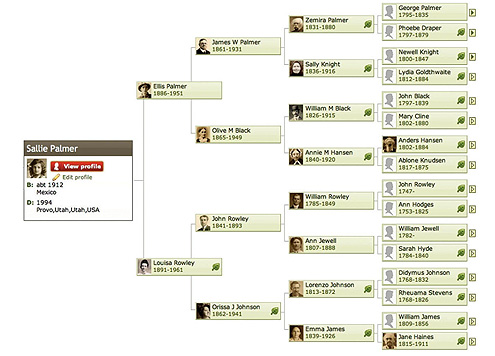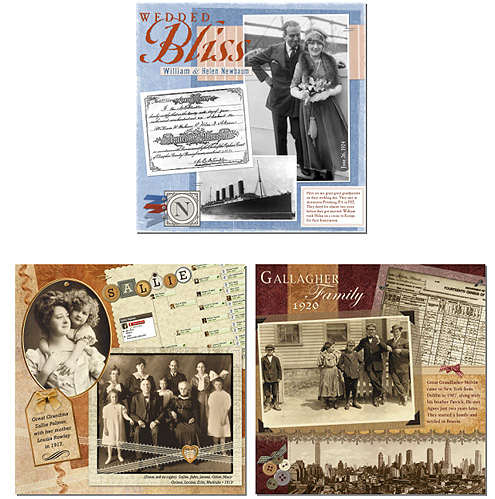Epson Computer
Tip – Quick & Easy Digital Scrapbooking
(Using Digital Scrapbooking Kits to Create
An Easy Baby Themed Digital Scrapbook Page)
By Barbara Kotsos
 For
project ideas and more, visit www.epsoncreativezone.com For
project ideas and more, visit www.epsoncreativezone.com
|
One
of the great things you can do with scrapbooking is create a family
history book
Using what you already have, what you can gain from relatives
and an often surprising treasure trove of materials you can find
online. A good starting place is to create a free family history
site on Ancestry.com. This will let you organize your information
and print out a family tree, easily.

The nice part about this is you can share this tree with your
family – wherever they may live. You can upload photos
and stories – and so can your aunts, uncles, cousins,
sisters – whomever you’d like to invite. Then you
know your family history information is archived and preserved
for everyone - and it’s entirely free. You can then print
the photos and stories for your family history book.
Now, here’s the fun part. As you add your family to your
tree on Ancestry.com, their search engines will automatically
start searching its records for relevant matches. For ten years
Ancestry.com has spent hundreds of millions of dollars and billions
of hours to scan, preserve and index documents so you can find
in minutes what it used to take professional genealogists months
to do. They now have 23,000 databases and over 6 billion names
and are adding records all the time. This part of the site,
these records, are part of the premium service that does cost
money, but Ancestry.com has an easy free trial you can start
with and see what you can find.
|
So instead
of flying four states away to scroll through microfiche in a dusty
basement, in the course of a few hours – sometimes as little
as a few minutes – you can find things no one in your family
has ever seen before. |
 |
For example, from 1917
to 1918, 24 million men in the US filled out a World War I draft
card. Here you can see the actual signature, his occupation, where
he lived and even the color of his eyes. |
 |
Starting just after the Revolutionary
War in 1780, the US began taking a census of its residents every
10 years. These are a goldmine of family history information because
you often find your great grandparents living at home as children,
along with the names of all their siblings and parents, their parents
country of origin – and other fun facts like their address,
occupation, ability to read, whether they owned a radio, how much
personal wealth they owned and who their neighbors were. |
 |
If you go back far enough in American
history, we are all immigrants. Though we don’t have records
going back thousands of years to the land bridge across the Bering
Straight, we do have passenger lists for those entering the United
States dating back to 1819, with the name of the ship and captain,
port of origin, date and – most importantly – passengers. |
 |
And for many of these passenger lists,
you can also pull up a photo of the actual ship itself. |
 |
And access and print context for their
lives – like maps and historic photographs. |
So in
addition to your family tree, you no longer just have your family’s
photo of Grandpa, but his immigration record and the ship he sailed
in on, his actual World War I draft card and a census showing
where he lived, who he lived with, and what he was doing every
ten years of his life. Then you can find photos and maps of what
his town looked like during his lifetime, along with all sorts
of other information sources like military service records, yearbook
photos, court, land and probate records, newspapers, marriage
records, etc. With all of these wonderful artifacts, you can then
create your final masterpieces; scrapbook pages like these, full
of fascinating facts and photos.
What a gift this will be for everyone in your family . . .
Go to Ancestry.com and get started on your family tree!
|
Samples
 |

Barbara Kotsos
| Sponsor: Epson
America, Inc. |
|